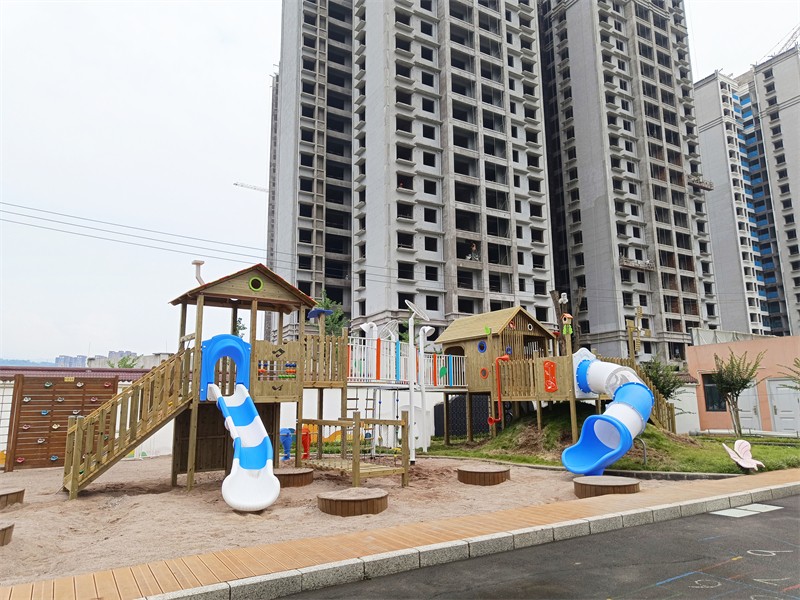In modern families, children's healthy growth and safe play are among parents' top concerns. With the advancement of technology and growing environmental awareness, non-powered children's play facilities, with their unique advantages, are becoming a popular choice in city parks, community plazas, kindergartens, and family playgrounds. This article will delve into the appeal of non-powered children's play facilities and how they provide a safe, fun, and beneficial play environment for children's physical and mental development.
1. What are non-powered children's play facilities? Non-powered play facilities are amusement equipment that does not require electricity or other external energy sources. They typically include traditional rides such as slides, swings, climbing frames, sandpits, and seesaws. Their designs are often inspired by natural elements such as trees, hills, and bodies of water, allowing children to experience the joy of play in a natural environment.
2. Safety of Non-powered Play Facilities: Safety is a primary consideration when choosing children's play facilities. Non-powered play facilities are typically constructed of environmentally friendly materials such as non-toxic plastics, anti-corrosive wood, and stainless steel, ensuring that children are protected from harmful substances while playing. Furthermore, the structural design of these facilities adheres to ergonomic principles, with smooth edges and no sharp corners, preventing accidental injuries during play.

3. The Educational Value of Non-Powered Playgrounds: Non-powered playgrounds are more than just entertainment; they serve as educators for children's development. Through activities like climbing, sliding, and jumping, children can develop coordination, balance, and muscle strength. These activities also foster social skills, such as cooperation, sharing, and taking turns, as well as problem-solving.
4. The Environmental Protection of Non-Powered Playgrounds: In today's climate of promoting green living, the environmental protection of non-powered playgrounds is particularly important. They require no electricity, reducing carbon emissions and energy consumption. Furthermore, many non-powered playgrounds are designed and constructed to coexist harmoniously with the natural environment, such as using sustainable materials and integrating into the natural landscape, providing children with an opportunity to connect with and learn about nature.
5. Diverse Selection of Non-Powered Playgrounds: Non-powered playground equipment offers a wide variety of options to meet the needs of children of different ages and interests. From sandpits and swings for younger children to climbing frames and rope nets for older children, each facility sparks children's curiosity and desire for exploration. Furthermore, many facilities incorporate themed elements, such as animal figures and fairy tale scenes, to enhance the fun and educational value of the ride.
6. Installation and Maintenance of Non-Powered Playgrounds: Non-powered playground equipment is relatively simple to install, requiring no complex electrical systems or professional maintenance. Most facilities are modular in design for easy transportation and assembly. During daily use, regular inspections of the equipment's stability and safety are sufficient to ensure that children's play environment is always in optimal condition.
Non-powered children's playground equipment, with its unique appeal, provides children with a safe, fun, and nurturing play environment. They not only satisfy children's desire for play but also support their healthy growth and education. With society's increasing emphasis on children's developmental environments, non-powered playground equipment is poised to play an even more important role in children's entertainment in the future. Let us embrace non-powered amusement facilities and create a better childhood for our children.
+86-13566236059
#16 Chuangqiang Road, Light industrial area, Lucheng district, Wenzhou city, Zhejiang Province, China.
+86-577-85951908
+86-577-86457291
